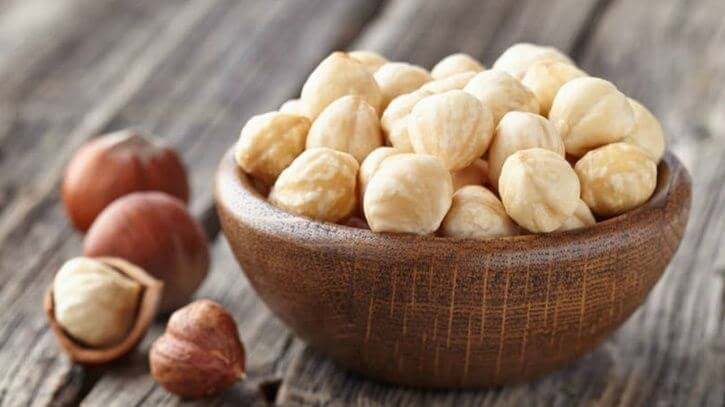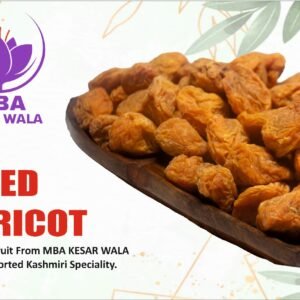
Brazil Nuts
₹579.00 – ₹979.00Price range: ₹579.00 through ₹979.00 N/A
Brazil Nuts
1) What is Brazil Nuts
Brazil nuts are large, edible seeds harvested from the Bertholletia excelsa tree, native to the Amazon rainforest. These nuts are nutrient-rich and known for their high selenium content, along with healthy fats, protein, and other essential minerals.
2) How to Select Brazil Nuts
Look for Freshness: Choose nuts that have a creamy-white inside and are free from mold or discoloration.
Texture: They should be firm, not soft or shriveled.
Smell: Fresh Brazil nuts have a mild, nutty scent. If they smell rancid, they’re likely spoiled.
Packaging: Ensure that the packaging is sealed to maintain freshness, especially for shelled nuts.
3) Benefits of Brazil Nuts:
Rich in Selenium: Supports thyroid function and boosts immunity.
Heart Health: High in healthy fats like Omega-3, promoting cardiovascular health.
Anti-inflammatory Properties: Selenium and antioxidants help reduce inflammation.
Supports Brain Function: Essential nutrients like magnesium, zinc, and fatty acids contribute to cognitive health.
Aids Digestion: Dietary fiber supports gut health.
4) Packaging Sizes Available:
Brazil nuts are available in various packaging sizes, depending on the brand and retailer. Common sizes include:
250 grams
500 grams
5) Uses of Brazil Nuts:
Snacking: Eaten raw or roasted as a healthy snack.
Baking: Used in cookies, cakes, and other desserts.
Culinary: Ground into nut butter or added to salads, granola, and trail mixes.
Oils: Extracted for use in cooking or skincare products.
Smoothies: Can be blended for extra nutrition.
6) Health Benefits for Specific Groups:
Men: Brazil nuts support testosterone levels and boost male fertility due to selenium. They also promote heart health.
Women: Beneficial for thyroid health, hormone balance, and skin elasticity. Selenium aids in preventing cell damage and aging.
Kids: Packed with essential nutrients like magnesium and healthy fats that support growth and brain development.
Elderly: Help prevent cognitive decline and support bone health, thanks to high levels of calcium and magnesium.
7) Taste of Brazil Nuts:
Brazil nuts have a creamy, rich, and slightly earthy flavor with a smooth texture. When roasted, the flavor becomes more pronounced, offering a subtle sweetness.
8) How to Consume Brazil Nuts:
Raw: Eaten as is, providing maximum nutritional benefits.
Roasted: Light roasting enhances flavor without compromising nutrition.
Smoothies or Shakes: Added to drinks for a nutrient boost.
Ground: Used as a topping for oatmeal, yogurt, or desserts.
Nut Butter: Made into spreads or added to recipes.
Portion Control: Limit intake to 1-3 nuts per day due to the high selenium content.
9) How to Store Brazil Nuts:
In the Pantry: Store in an airtight container in a cool, dark place for short-term storage (up to 1-2 months).
In the Fridge: For longer shelf life, store them in the refrigerator, which extends freshness to 3-4 months.
In the Freezer: For even longer storage, freeze Brazil nuts for up to a year in an airtight container.
10) Product Life and Harvesting Time:
Harvesting Time: Brazil nuts are harvested during the rainy season (typically from December to March in the Amazon rainforest).
After Harvesting: Once harvested, the nuts are dried to reduce moisture and prevent spoilage. They are then shelled (if sold without shells), sorted, and packaged.
Product Shelf Life: Unshelled nuts last longer (up to a year), while shelled Brazil nuts should be consumed within 6 months if stored properly.
| packaging | 250 G, 500 G |
|---|
Related products
- 1000 GRMFrom: ₹1,310.00
- 500 GFrom: ₹682.00
Kashmiri Mamra Badam
Kahwa Sugarfree
- 1000 GRMFrom: ₹1,456.00
- 250 GFrom: ₹444.00
- 500 GFrom: ₹738.00
Cashew (Kaju)
Kagzi Walnut
Kagzi Badam
- 1000 GRMFrom: ₹1,138.00
- 500 GFrom: ₹602.00
Red Apricot
- 1000 GRMFrom: ₹624.00
- 500 GFrom: ₹339.00
Black Raisins
₹251.00 – ₹1,295.00Price range: ₹251.00 through ₹1,295.00 N/A


₹339.00 – ₹624.00Price range: ₹339.00 through ₹624.00 N/A











Reviews
There are no reviews yet.